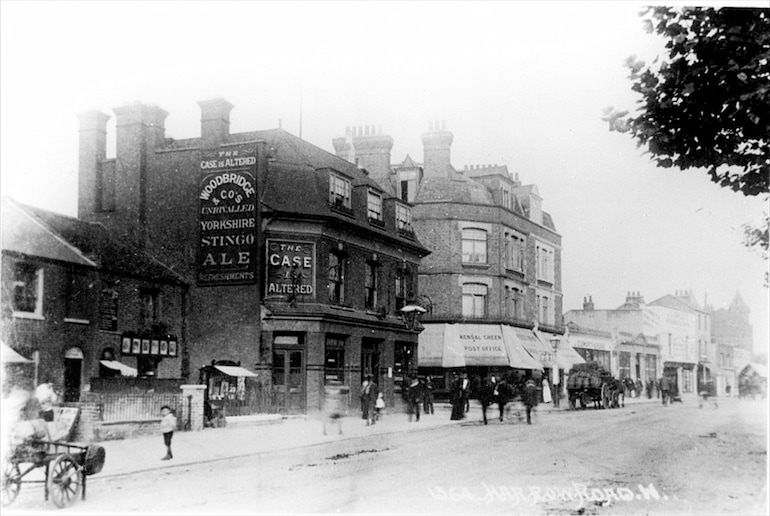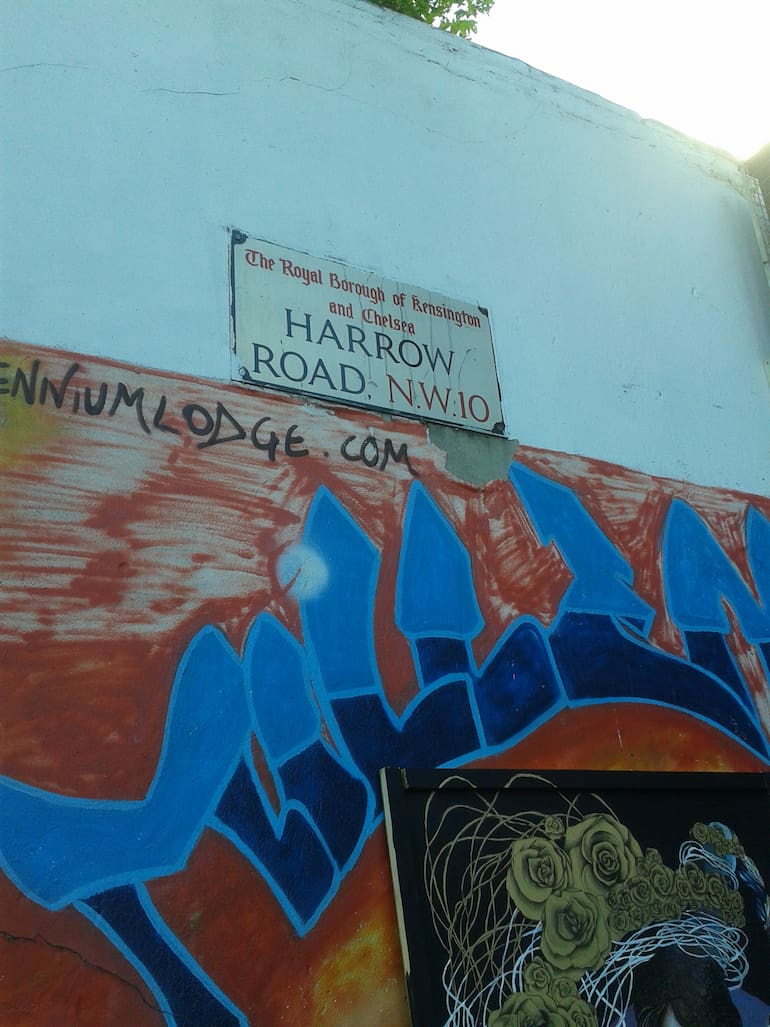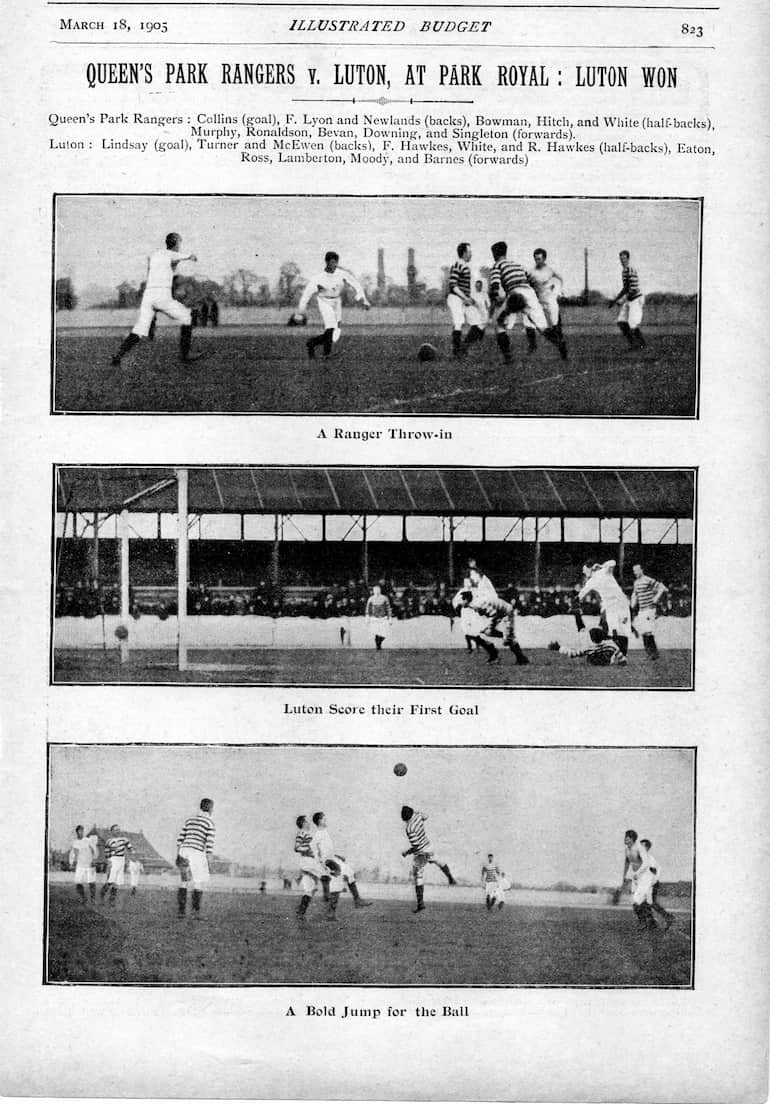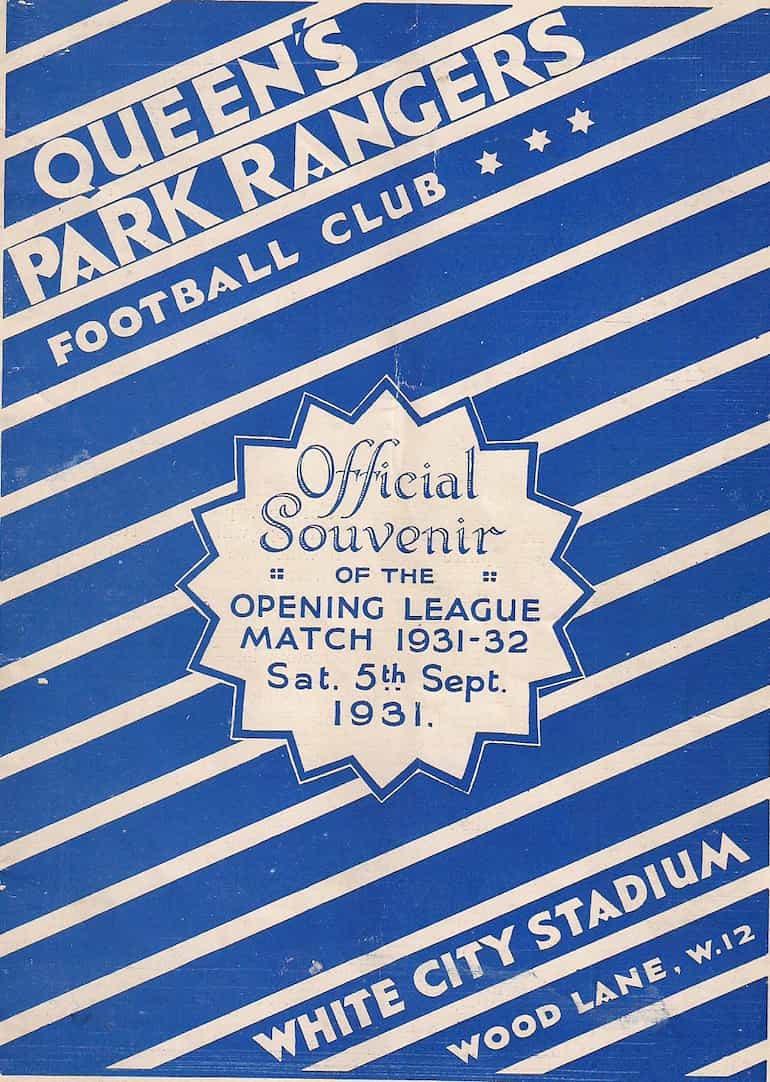IT is well chronicled that Queens Park Rangers have utilised more home venues than any other Football League club.
They eventually settled at Loftus Road in 1917 allowing present day Championship betting to take place.
One of the most intensive pieces of football research I have ever undertaken involved tracing exact locations of all the former QPR home grounds dating back to Victorian times. I then visited each site in turn to have a walk around and see what exists there in the modern era.
Here is a synopsis of my in-depth investigation…
WELFORD’S FIELD 1886-1888
Rangers began life playing in 1886 at Welford’s Field, which was owned by J. Welford & Son Dairy. Several history books describe this as a football pitch situated behind The Case Is Altered public house, south of Kensal Rise Station.

Although the pub was destroyed by wartime bombing, I determined it previously stood at 768 Harrow Road, Kensal Green, London NW10. A map from the late 1800’s revealed a patch of open land had stretched behind the pub - bordered by Pember Road, Wellington Road and Warfield Road.
The Current Site
I strolled all the way around that area, which is now built over with houses. I deduced it was approximately the size of a football pitch. Thus I concluded QPR’s inaugural home ground was in the vicinity of Wellington Road, NW10.
LONDON SCOTTISH GROUND, BRONDESBURY 1888-1891
In 1888, QPR moved to the London Scottish Ground at Brondesbury in London NW6. The advantage of this venue was it provided much better facilities and was fully enclosed. It was also used by London Scottish Rugby Club within the same period.
A page from the 1890/91 QPR Club Handbook mentioned: “Dressing Room & Ground, Pavilion, Brondesbury Ground, Salusbury Road”. Alas, Rangers left the London Scottish Ground in 1891 due to the pitch being continually waterlogged almost every time it rained.
The Current Site
Salisbury Road is half a mile long, running from Brondesbury Park Station in the north to Queen’s Park Station in the south.
There is now a mix of shops, houses and schools. But all these buildings leave no indication of where a QPR football ground might have been.
BARN ELMS 1891
Barn Elms represents the only time Queens Park Rangers played south of the River Thames.
It appears from bygone newspaper reports that Barn Elms was utilised by QPR for most of the winter of 1891. Fulham FC had previously played there in 1888.
The Current Site
It is a multi-purpose sports complex used by grassroots football teams at Queen Elizabeth Walk in Barnes, London SW13.
On pulling in to the spacious car park, an imposing ‘London Marathon Pavilion’ stood in front of me.
All of a sudden, my attention quickly became focused on the football pitch. This is situated in the far left hand corner of the field and is surrounded by an athletics running track.
Then as I approached the pitch, I could barely believe my eyes! There was an ancient and antiquated grandstand alongside the touchline.
Consisting of five rows of stepped terracing, a curved roof and smothered in graffiti, it could cater for maybe 100 spectators. Was this the very first QPR spectator accommodation?
Footnote: The old stand has been replaced by a fresh structure since my visit.
HOME FARM 1891
The whereabouts of Home Farm in Kensal Green has always been shrouded in mystery.
My meticulous research uncovered a listing in Kelly’s trade directory from the early 1890’s which gave an address for Home Farm as Harrow Road, London NW10.

So I believe Home Farm was indeed on the Harrow Road - west of Welford’s Field and towards Kensal Green Station.
An article in All Sports Weekly stated the R’s left Home Farm after they “were evicted from there by the demands of the builder.”
The Current Site
This stretch of road is half a mile long. I observed a mix of residential and commercial properties, but no evidence of where a QPR football ground might have been.
KILBURN CRICKET CLUB 1892-1893
This was situated where Harvist Road, London NW6 is now. But I perused a map from the 1890’s and learned it was previously called Mortimer Road.
The map shows a possible sporting venue of some open ground along Mortimer Road (west of Queen’s Park) before the junction of Chamberlayne Wood Road, although a cricket ground is not specifically marked. Nevertheless, there is also a chance the cricket ground was inside Queen’s Park itself.
The Current Site
The road is three quarters of a mile long. It has Queen’s Park on the north side and plenty of residential accommodation too. This consists of late Victorian and Edwardian houses developed from around 1895, so any traces of a QPR pitch are long gone.
GUN CLUB 1893-1896
The Gun Club was at Wormwood Scrubs, Wood Lane, London W12. It was an enclosed venue containing dressing room facilities.
A pay box was in place to take admission money from spectators at matches. QPR’s playing area was surrounded by a footpath and was part of a larger field which also contained a rifle range.
Looking at a map from 1893, I spotted the Rifle Pavilion Hotel (later called The Pavilion) south of the junction of North Pole Road and Wood Lane. With Wormwood Scrubs being west of Wood Lane, it could be the Gun Club was in this vicinity – especially as I saw a reference to “Pigeon Shooting Ground” on the map. It is where the Linford Christie Stadium is nowadays.
The Current Site
Known locally as ‘The Scrubs’, this 200 acre piece of open land runs behind imposing prison and hospital buildings. There are 20 football pitches, two rugby pitches, hurling and youth baseball areas plus a pony club. Meanwhile, 11 cricket pitches are marked out in the summer.
The Linford Christie Stadium is an integral part of Wormwood Scrubs. This opened in 1967 and was originally known as the West London Stadium. It has been used for football by Middlesex League clubs in recent years.
Even though Wormwood Scrubs continues to be a popular hive of local sporting activity, I was unable to pinpoint any vestiges of the Gun Club.
NATIONAL ATHLETIC GROUNDS 1896-1901, 1902-1904, 1915-1917
A map from 1894 shows the stadium as being north of Kensal Rise Station, between College Road and Chamberlayne Road.
It had a cinder running track surrounding the football pitch and a pavilion on the north side. The spectator accommodation mainly consisted of open asphalt banks.
Two long entrance walkways to the Athletic Grounds are shown on the map – one from College Road and one directly from Kensal Rise Station.
QPR left the National Athletic Grounds in 1901 when the landlord decided to terminate the lease. But the R’s later returned for two further spells and Hendon FC also played there for a while.
In 1917, the National Athletic Grounds were requisitioned for allotments to help the war effort as good agricultural land was in short supply. Then in 1921, it made way for houses that today make up Whitmore Gardens, Leigh Gardens and Clifford Gardens.
The Current Site
The area has been totally revamped with a residential road called Whitmore Gardens covering the football pitch footprint.
It appears one of the entrance walkways was where house number 80 in College Road is currently. In addition, I was intrigued to see part of the other entrance walkway survives – it is now a lane called Pine Mews, just behind Kensal Rise Station.
LATIMER ROAD 1901-1902
QPR were rapidly growing in popularity during this period and the highest gate of the season at Latimer Road was 12,000 versus Tottenham Hotspur in the Southern League on 28th December 1901.
This ground had no dressing rooms. In fact, Rangers players used to get changed at the Latimer Arms pub before jogging down the road in full playing kit to reach the pitch. They were cheered and followed on this route by a number of small boys who could not afford the 1d admission charge to watch the football.
The Latimer Arms was a famous hostelry as it featured as the fictitious ‘Skinners Arms’ in BBC1’s Steptoe & Son comedy show. Unfortunately, the real life pub closed down in the early 1990’s.
In order to pinpoint QPR’s Latimer Road ground, I studied a map of the vicinity from 1893. This revealed two possible settings for a football pitch.
The first was on open land to the east of Latimer Road and south of the “Tennis Grounds”. A second possibility was at St Quintin Park on St Quintin Avenue, slightly north-east of Latimer Road. I also noticed a “P.H.” (public house) marked at the most southerly end of Latimer Road.
The 1902/03 QPR Handbook revealed the club’s departure from Latimer Road was due to “bigoted opposition…in the region of Notting Hill” with local residents calling Rangers players “muddied oafs”.
The Current Site
My first observation was the open land to the east of Latimer Road is now filled with houses. I then visited the site of St Quintin Park which continues as a recreation area. It is divided in use between the West London Bowling Club and Kensington Memorial Park, but there are no remnants of a football pitch.
After that I walked south on Latimer Road to see where the Latimer Arms might have been sited. It was at this point I made an extraordinary discovery!
The building I recognised from Steptoe and Son still exists! It is no longer a pub, yet judging by the number of door bells at the main entrance it is used as residential flats.
So I was absolutely delighted to find the oldest remaining QPR dressing room building.
THE HORSE RING 1904-1907
This was part of a huge Royal Agricultural Society Showground in Park Royal, London NW10.
The area was developed in 1902 when The RAS decided to create a permanent base for their Annual Show which highlighted the latest developments in agriculture concerning farm machinery and animals.
Show rings and grandstands were erected and ‘The Plumes’ pub/hotel was constructed within the grounds to provide liquid refreshment.
When Queens Park Rangers were forced to leave Latimer Road in 1904, the RAS Showground’s Horse Ring became available for hire.
This oval-shaped stadium had a large grandstand on the north side, a smaller stand on the south side and two levels of banking behind both goals. The overall capacity was 40,000 including 5,000 under cover.
Rangers played at the Horse Ring for three years, attracting crowds of up to 16,000 for Southern League matches.
Unfortunately, visitor numbers for the RAS Shows began to dwindle and the society decided their permanent setting was not a success. As a result, shows went back to touring the country and the Park Royal complex was sold off for industrial development.
This site eventually housed the vast Guinness Brewery until production of Guinness there ceased in 2005. The entire Park Royal brewery was subsequently demolished a year afterwards.
The Current Site
A large office building dominates the landscape. There are no traces of the Horse Ring football stadium.
But when I wandered along Abbey Road, I had an amazing vision in front of me! The Plumes pub/hotel building is still intact! I wonder what the betting odds on that happening would be? It is now a conference and banqueting suite.
So although the Horse Ring is gone, I found the last lingering part of the Royal Agricultural Society Showground…in effect, the original QPR pre-match boozer!
PARK ROYAL STADIUM 1907-1915
Queens Park Rangers moved just 400 yards south-east here from the aforementioned Horse Ring.
Park Royal Stadium sat between Coronation Road and now defunct Park Royal Railway Station (which was west of the present Park Royal Underground Station).
Once the Park Royal Station opened in 1903, Great Western Railway Company decided to build a stadium next door on two and a half acres of land. It cost £11,000 and was an almost replica of Middlesbrough FC’s Ayresome Park ground.

Park Royal Stadium had a claimed capacity of 60,000 with 4,000 seats and 9,000 under cover. R’s supporters could walk there in seconds from the railway station.
A large seated grandstand and a covered standing enclosure prevailed on the railway side, plus sloping terracing and crush barriers on the other three sides.
The best ever crowd at the Park Royal Stadium was 29,786 for a top of the table Southern League clash against Plymouth Argyle on Christmas Day 1907. The match finished 0-0.
Unfortunately, QPR were forced to leave Park Royal Stadium when it was requisitioned by the military for training purposes during World War I in February 1915. The stadium was later demolished.
The Current Site
It was located where Johnsons Way and Sovereign Park are nowadays. These roads consist of industrial units and there are no remnants from Park Royal Stadium.
WHITE CITY STADIUM 1912, 1931-1933 and 1962-1963
At Easter in 1912, there was a miners’ strike. This affected the supply of coal to the Great Western Railway Company so badly that they couldn’t run steam trains to Park Royal where Queens Park Rangers were based in the adjacent stadium.
As most fans travelled to matches by train in those days, Rangers decided to switch two Southern League games versus Southampton and Stoke to the massive White City Stadium. This could easily be reached by R’s supporters as it was near to a tube station in Shepherd’s Bush.
Past newspaper articles mentioned an attendance of 62,000 versus Southampton and 20,000 for the Stoke game. These figures would appear to be somewhat exaggerated as QPR’s average home gate was 13,750 in 1911/12.

White City Stadium had been originally developed for the 1908 Summer Olympics. It was opened by King Edward VII on 27th April 1908 and hosted a number of sports including greyhound racing and speedway.
The stadium was part of the Franco-British Exhibition, where 20 huge palaces and 120 exhibition buildings were erected on the 143 acre site by a workforce of 15,000 men. This exhibition promoted the industrial achievements of France and Britain, drawing more than eight million visitors. Made of steel and concrete, the ornate buildings were whitewashed - hence the name ‘White City’.
Costs for the stadium construction came to £85,000. Original plans were for a ‘London Colosseum’ to hold 367,000 people all-seated!
However when completed, White City Stadium actually catered for 130,000 spectators incorporating 60,000 seated and 20,000 under cover. There was a running track and a cycle track around the pitch. It was the biggest sports venue ever built in Britain.
Following the Easter matches in 1912, Queens Park Rangers had two further playing spells at White City Stadium from 1931-1933 and from 1962-1963. On both occasions, it proved unsuitable due to small football crowds being lost in the enormous environs. Significantly, R’s fans complained about being a long way from the pitch due to the surrounding tracks.
Even so, QPR attracted an all-time club record home crowd of 41,097 at White City on 9th January 1932 whilst defeating Leeds United 3-1 in the FA Cup Third Round.
White City Stadium was eventually demolished in 1985.
The Current Site
The oval-shaped arena stood at the top of South Africa Road – just 250 yards from QPR’s current Loftus Road headquarters. Nothing is left from White City Stadium because the whole site was redeveloped with BBC buildings and car parking.
*Credit for the photos in this article belongs to Tony Incenzo*


